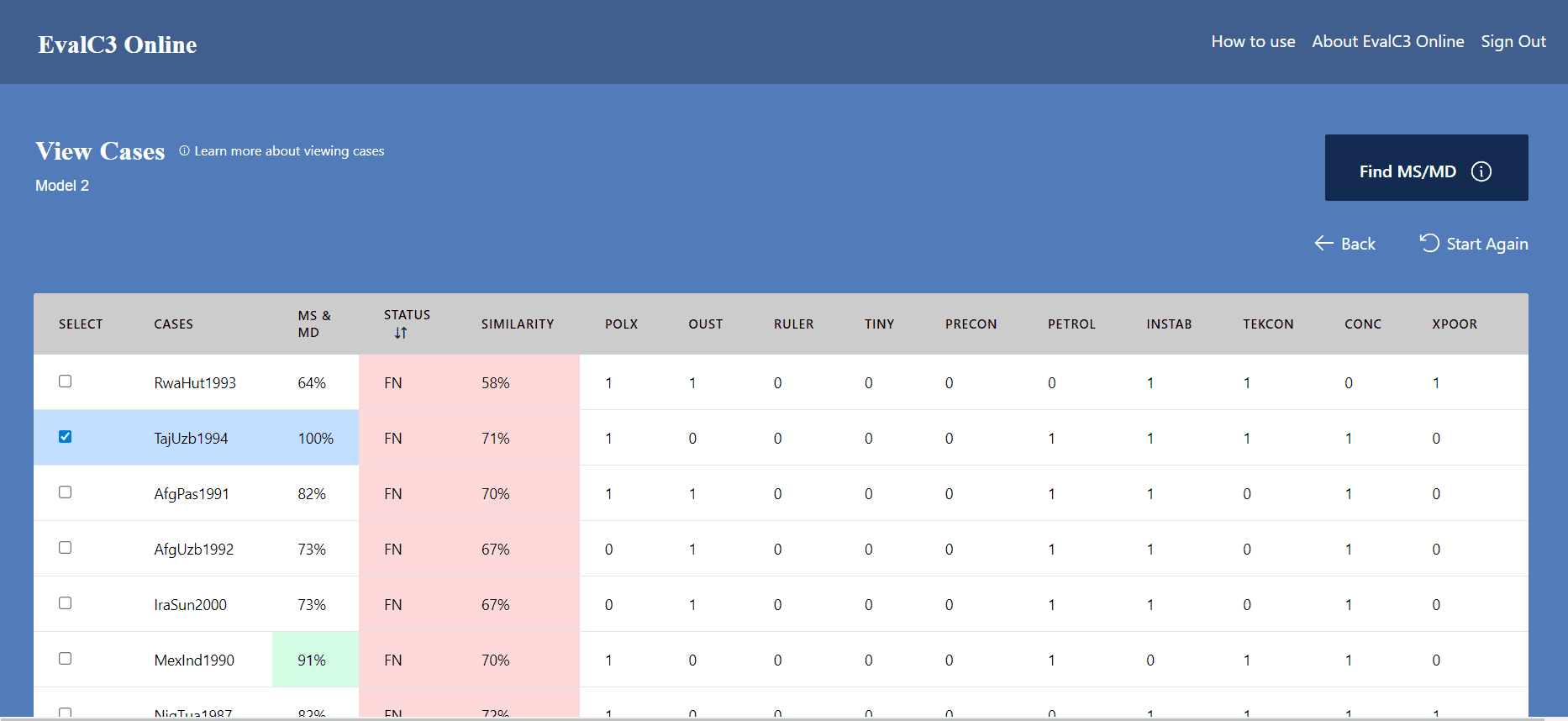EvalC3 Online: How to use the View Cases screen

What you can see
In this screen you can see details of the attributes of all the cases you are analysing.
Including:
- Case names /IDs
- The presence (1) or absence (0) of each case attribute
- The Confusion Matrix status of each case
TP = True Positive (mauve)
FP = False Positive (light mauve)
FN = False Negative (light pink)
TN = True Negative (pink) - Similarity - a measure of how similar each case is to all other cases of the same Confusion Matrix status. A high percentage value means the case is very similar to all others of the same status. Similarity is measured using Hamming Distance.
- MS/MD - a measure of how similar and how different all other cases are, when compared to a selected case.
What you can do
You can use the two similality measures to select cases for follow-up within-case inquiries.
Looking at similarity within a category such as True Positives, the highest value can be seen as a modal case, the lowest value can be seen as an outlier. A modal case could be seen as a case that is most representative. If a plausible causal mechanism was found within a modal case it might be considered a more generalisable finding if could also be found in an outlier case, i.e. the most different case.
In addition you can see how similar a selected case is with all other cases of any status (and how different it is). Select one of the cases using the tick box on the left column. Then click on the "Find MS/MD" button. A new column of percentage values will appear, in a column titled MS & MD (Most Similar and Most Different). The green highlighted cases are those that are most similar (MS) to the selected case. The beige colored cases are those that are most different (MD). You can change the choice of case and re-click the Find button as often as you like. This feature can inform selection of cases from different Confusion Matrix categories. For example to find a True Positive and False Positive case which are most similar, yet have different outcomes
For more information on choices in this area see:

